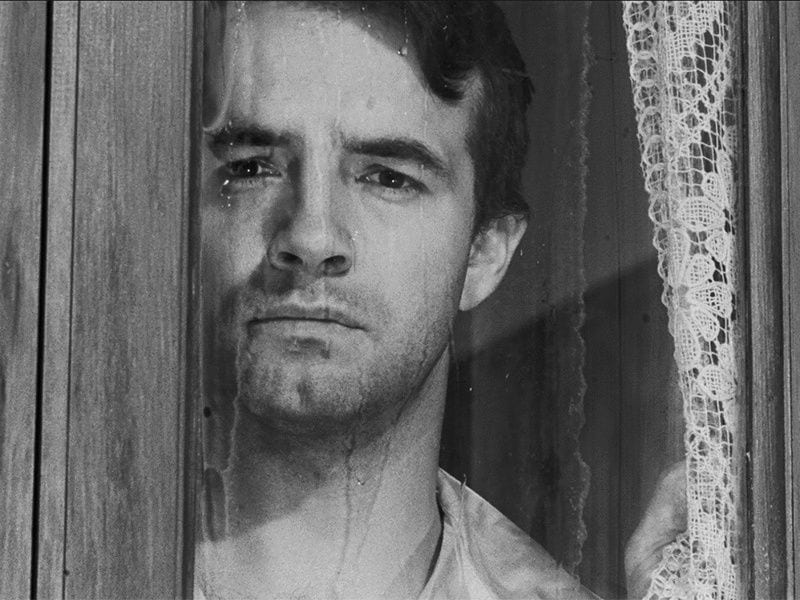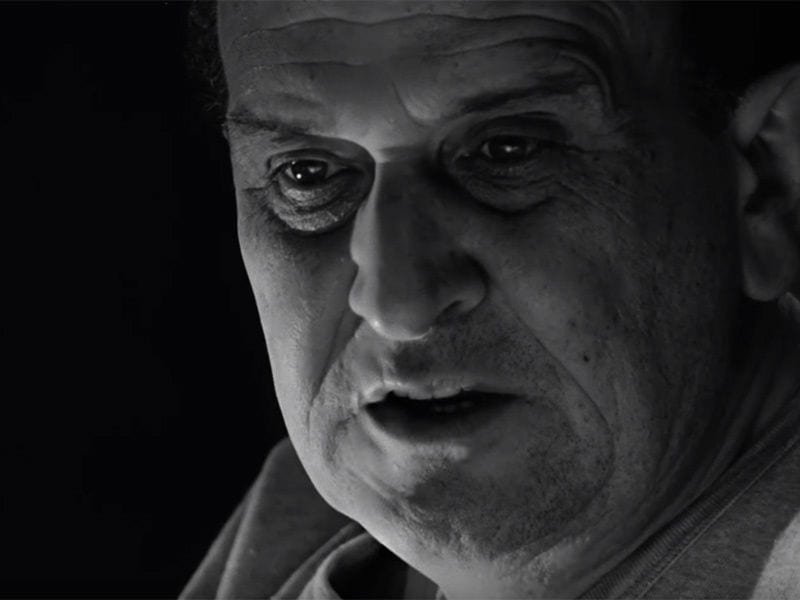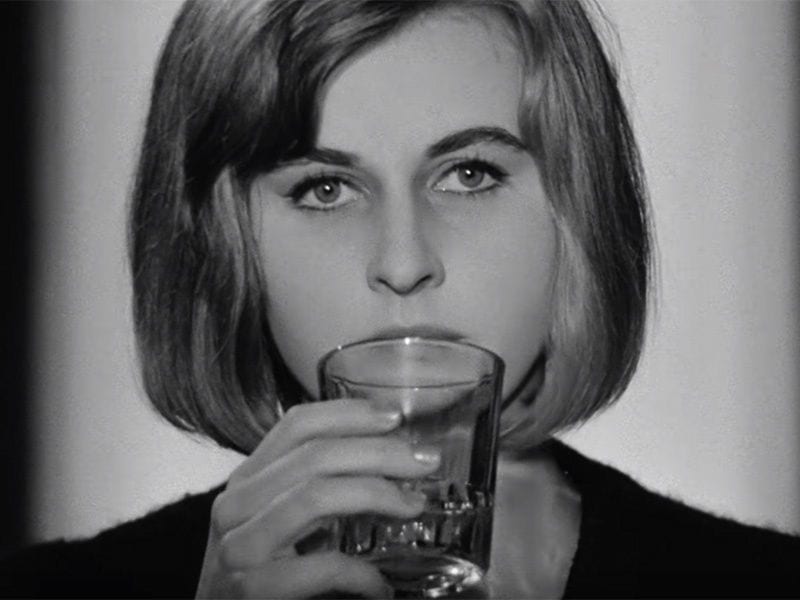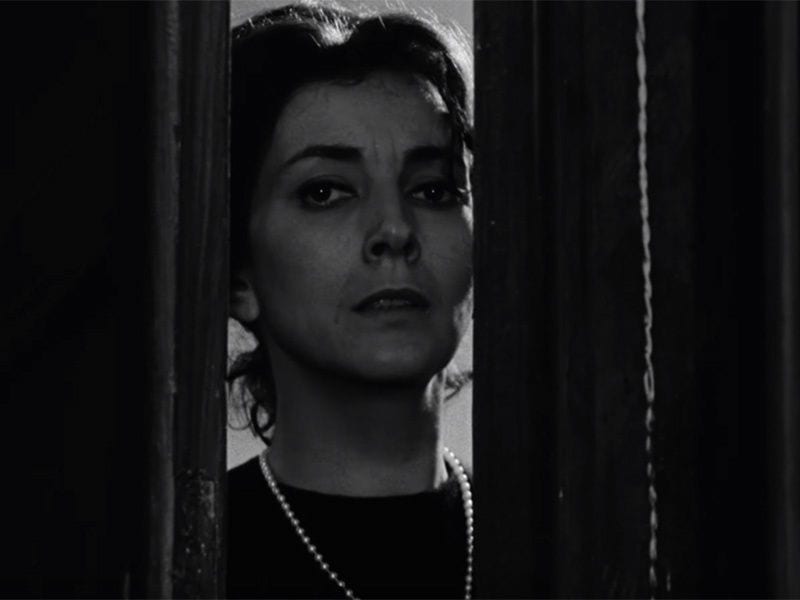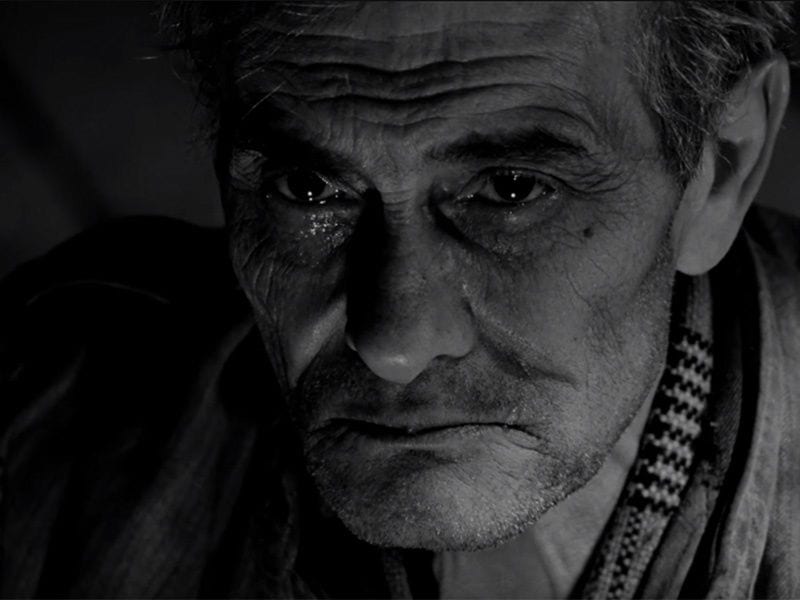
The Possessed is two movies. Or, to extend the title’s Dostoyevsky reference, it’s a movie and its double. On Arrow Video’s Blu-ray of this 1965 Italian film, now having its home video debut in Region 1, we’re gifted with both the Italian and the English dubs, and their differences go beyond the linguistic.
All Italian films of the time were shot without sound and dubbed into their own language plus the languages of other territories, as per co-production and distribution deals. In the domestic versions, Italian actors dubbed their own voices while the many non-Italian actors were dubbed by others. For the foreign versions, the foreign actors often dubbed their own lines — and their lips matched, since they usually delivered lines in their own language when the film was being shot.
The Possessed, for example, stars American actor Peter Baldwin, who spent most of his career directing American TV but acted in several Italian films. The English soundtrack is probably giving us his real voice while the Italian actors around him are dubbed in English. The Italian version, called La Donna del Lago or The Lady of the Lake, as we’ll call it for convenience, dubs his performance into Italian while we hear the other actors’ proper voices. In both versions, French actor Philippe Leroy is dubbed into one language or the other. The character played by Pia Lindström, Ingrid Bergman’s daughter, never speaks and never needs to worry about it.
The difference between The Possessed and The Lady in the Lake, as we’ve stated, goes beyond this common linguistic convention. The two versions tell subtly different stories, or with a subtly different tone, even though the footage is identical.
The Lady in the Lake begins with our hero, a novelist named Bernard (Peter Baldwin), having a fraught conversation in a phone booth with a girlfriend named Claudia. We hear both people, and it’s clear he’s breaking something off and saying it’s better this way while she pleads her love. Before he turns to face the camera, we see only Bernard’s back, and we hardly see that through the glass reflections that obscure him. He’ll remain obscure and metaphorically under glass throughout the movie. He states that he doesn’t really feel anything and he needs to go away for a while.
Then we see him driving to the town where the rest of the movie takes place. As he drives by the lake, his voice-over states that he doesn’t understand what’s wrong with him, some kind of ennui or lack of feeling, but he starts to feel better when he sees the lake. We’ll later learn that he used to spend boyhood summers there and that the lake conceals a submerged town, which he used to look for. Bernard is obsessed with the lake and idea of submerged things. This idea catalyzes his work as a novelist, but some characters express the opinion that his fiction doesn’t delve deeply enough, and he admits that he avoids autobiography but that his new book will try to address that.
We’re getting ahead of ourselves. Before those conversations, Bernard checks into the same hotel where he stayed the previous summer, even requesting the same room. The owner, Enrico (Salvo Randone), chats and shows him the slaughterhouse across the courtyard, which Enrico says he bought for his son to work in, and that this son, Mario (Philippe Leroy), is returning from his honeymoon with a foreign bride named Adriana (Pia Lindström).
When Bernard unpacks, he takes out photos of a pretty woman, Tilde (Virna Lisi), who works as a maid at the hotel. Now the film finally reveals, as though being coaxed out of Bernard’s narrative coyness, that Tilde is the reason for the visit, that he wants desperately to see her. He rings the bell and anticipates her arrival to his summons, but the maid is a different woman. After a few more scenes and feints, including a brief Vertigo-esque sequence of following the wrong woman through the streets who’s wearing Tilde’s, Bernard finally asks Enrico about Tilde, only to be told that she committed suicide the prior winter.
The rest of the film reflects Bernard’s confusion as he tries to find out the truth of what happened. He quickly learns that nobody believes she killed herself, since her throat was cut. She might have been pregnant, but an autopsy covered it up by claiming she was a virgin, even though Bernard recalls once spying on her in bed with a man he couldn’t recognize. He eventually concludes that he never really knew her, and that she existed more inside his head than in reality — which is even more true now.
This description makes the movie sound more straightforward than it is, even without the mysterious drama of the “ill” and reclusive Adriana, who doubles Tilde in many ways. The story’s a feverish dream-narrative in which Bernard is often literally fevered and dreaming. At several points, the clarity of Leonida Barboni’s beautiful black and white photography shifts into a more high-contrast, more grainy, more wide-angle and expressionist mode in which various people do and say confrontational things directly into the subjective camera, only to have Bernard jerk awake from this dream or reverie, which has demonstrated the novelist’s creative mind at work. He wakes up more often than people in a Brian De Palma movie.
Watching The Lady of the Lake is an experience so disorienting and inscrutable that I began to wonder if Bernard would eventually recall that he himself is the phantom lover who got Tilde pregnant and perhaps returned one winter night to kill her, and perhaps killed the other characters who show up dead and get papered over by his statements to the police, which may be the product of his fictive mind. After all, his authority as a writer who can dictate the truth is never questioned by the town’s officials, who almost require him to validate their theories. If the film were remade today, that may well be how it unravels.
That’s not what happens, although the movie remains so ambiguous that I’m not entirely sure it can be ruled out. The whole film, as told to us retrospectively by the narrator, may be an exercise in how the novelist uses reality as a flimsy springboard for plumbing his own obsessions and revisions. In that sense, the film feels like a link between Alain Resnais’ Last Year at Marienbad (1961), the films of Alain Robbe-Grillet, and Paul Verhoeven’s The Fourth Man (1983), whose queer novelist-protagonist, modeled on writer Gerard Reve, explains how he “lies the truth”.
That’s The Lady of the Lake. On the other hand, The Possessed at every point tries to nail down the narrative to a greater clarity. In the opening phone call, Claudia states bluntly that Bernard must go see “her” again, and his voice-over while driving repeats that he’s come to revisit a woman. He no longer states that the lake makes him feel better but rather that the prospect of seeing her again is doing it.
In this English version, Mario is no longer employed as a butcher in a slaughterhouse, which hadn’t quite made sense for the town’s richest family. Now, Enrico says he converted the stables so that his son could store meat there. We still see him cutting meat, but now it’s explained why he has no customers.
A stranger detail in The Possessed is that a hunchbacked photographer (Pier Giovanni Anchisi), who indulges in some speculation reminiscent of Michelangelo Antonioni’s film of one year later, Blow-Up, claims to have seen Tilde’s corpse “by the side of the lake, before the ambulance took it away” and that many others saw it as well. This is odd because Enrico’s daughter Irma (Valentina Cortese), called Emma in English, discovered the body lying across the bed in Tilde’s room, and we catch glimpses of this image. Is the English narrative one in which the corpse got dumped by the lake or was for some reason displayed in public before the ambulance arrived?
Mind you, this throat-slashed image is already odd because it’s only what Bernard imagines from what he’s told — unless he really did see it. The truthful status of Bernard’s visions or dreams is never clarified, even when a hasty explanation is blurted out at the end amid high melodrama. Even here, the blurts don’t precisely match in both languages and leave much open to interpretation. The Possessed ends with Bernard’s voice-over asserting “but it’s the truth” while The Lady in the Lake ends with him declaring that everything is “incomprehensible” and feels distant, unreachable.
In short, both films lead us through the same visual labyrinth to deposit us at opposite epistemologies. There are several shots where a pacing Bernard precedes his mirrored reflection, or vice versa, and the two versions of this film similarly favor one form of certainty over the other. Apparently English viewers need more truth spelled out while Italians wallow in ambiguity.
The confusion extends to the film’s original English-language trailer, where the announcer keeps calling the film The Lady of the Lake while the title flashed onscreen is The Possessed.
The film is also doubled in direction, which is credited to both Luigi Bazzoni and Franco Rossellini. Franco is the son of Renzo Rossellini, who composed the film’s hysteria-inducing music, and the nephew of famed filmmaker Roberto Rosellini, and therefore Franco is the step-cousin of Pia Lindström. While you’re working that out, be aware that the consensus seems to be that Bazzoni was the film’s director and Franco Rossellini the producer, as he went on to serve in that capacity on many films and never took a director credit again. The extras on this Blu-ray include interviews with art director Dante Spinotti, make-up artist Giannetto De Rossi, and Bazzoni friend Francesco Barilli, none of which are especially germane to this film except to suggest that Franco Rossellini wasn’t really there.
Tim Lucas’ commentary combines attentive reading with background info and identifies Nino Baragli, one of the most important editors in Italian cinema, as crucial to the film’s affect. He calls the film a “giallo” while Richard Dyer, a critic in one of the extras, wonders whether it is. Here we have more of the film’s dual nature. As a genre, giallo refers to thrillers with twisty, abstruse, almost surreal narratives with doses of violence and a perpetual uncertainty about what is seen. In this sense, the film fits to a slashed “T”. However, the genre wasn’t yet identified and marketed as we’ve come to know it. Arrow’s packaging calls it a “proto-giallo“. We must believe this film had formative impact on the genre, even though it feels more like an intellectual art film of postmodern impulses about the nature of storytelling.
Ironically for a genre named after the yellow covers of Italian crime novels, this is a rare giallo that’s actually based on a novel. Prominent Italian writer Giovanni Comisso based it on a famous case. We’ll wonder to what extent Comisso, a gay writer, was, like his protagonist Bernard, avoiding autobiography or using it in limning a character who cannot follow through on his relations to women and winds up being surprised by the passions that drive them, which he can only imagine. To answer this question, we’d need to know the extent to which the script by Giulio Questi, Bazzoni and Rossellini adhered to the book’s viewpoint, and Lucas reads from a contemporary review that implies it’s very close.
Arrow’s 2K restoration from the original camera negative never looks less than ravishing, and providing both versions is an important choice in introducing us to a film previously little-known outside Italy. For its amplified layers of bafflement within its hallucinations, I prefer The Lady of the Lake to The Possessed, but this highly polished mirror of uncertainty and obsession is a lovely discovery under any identity.


